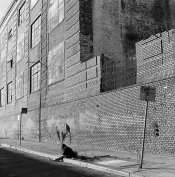RattyMouse
Member
I'm shooting right now medium format, 6 x 4.5 in size. I think I'm getting decent results from lab scanned negatives. However, I dont think what I have is very close to digital in terms of sharpness. I am using a Fujifilm GA645 with a very very sharp lens. I think that I should be doing better.
I have read many times that the only way to get good scans from negatives is through drum scanning. However, the cost of this is totally prohibitive. Does this mean that no matter what I do, my film negatives will always be less than a digital camera?
What about if I move up to 6 x 9 negatives? Still very far behind digital in terms of sharpness?
How about on prints? From what I understand, in today's printing world, a negative is given to a lab which is then scanned to be printed. Is this correct? Do all labs use drum scanners? If not, then even lab prints use less than perfect ways to extract detail out of film.
I shot medium format before the digital revolution and was always in awe of the sheer quality that was produced by 6 x 9 negatives. Is that all gone now except when expensive drum scans are done?
How can I do better? Or is that all there is today unless you print optically at home?
Thank you.
I have read many times that the only way to get good scans from negatives is through drum scanning. However, the cost of this is totally prohibitive. Does this mean that no matter what I do, my film negatives will always be less than a digital camera?
What about if I move up to 6 x 9 negatives? Still very far behind digital in terms of sharpness?
How about on prints? From what I understand, in today's printing world, a negative is given to a lab which is then scanned to be printed. Is this correct? Do all labs use drum scanners? If not, then even lab prints use less than perfect ways to extract detail out of film.
I shot medium format before the digital revolution and was always in awe of the sheer quality that was produced by 6 x 9 negatives. Is that all gone now except when expensive drum scans are done?
How can I do better? Or is that all there is today unless you print optically at home?
Thank you.





